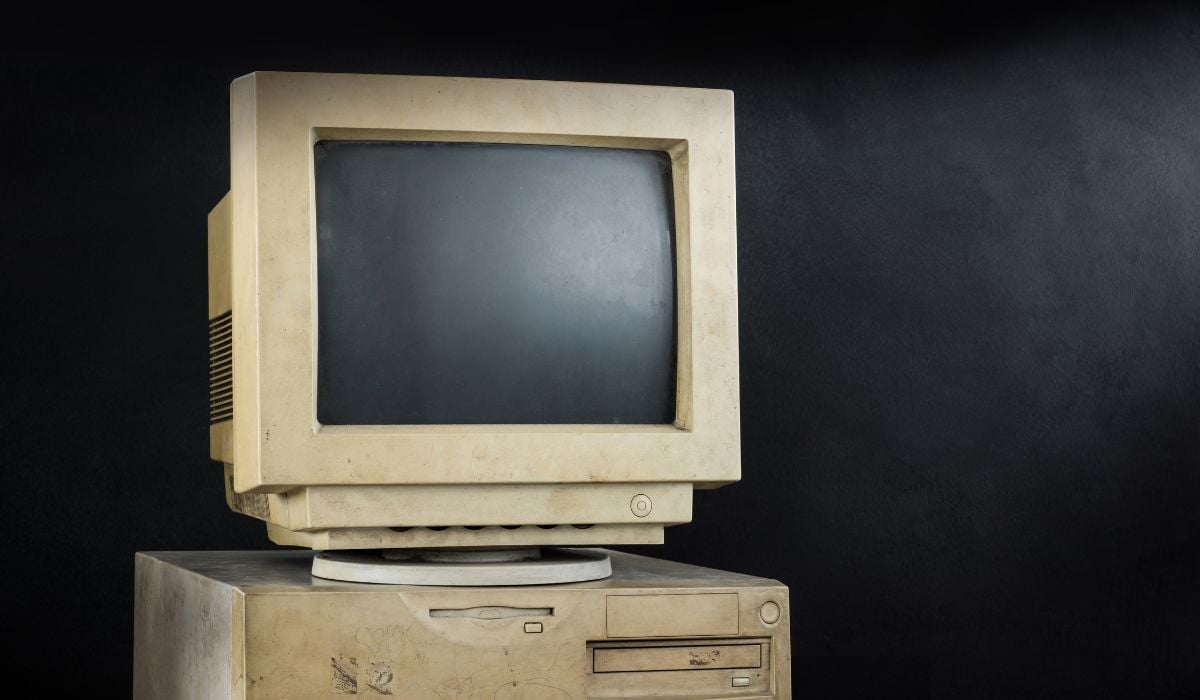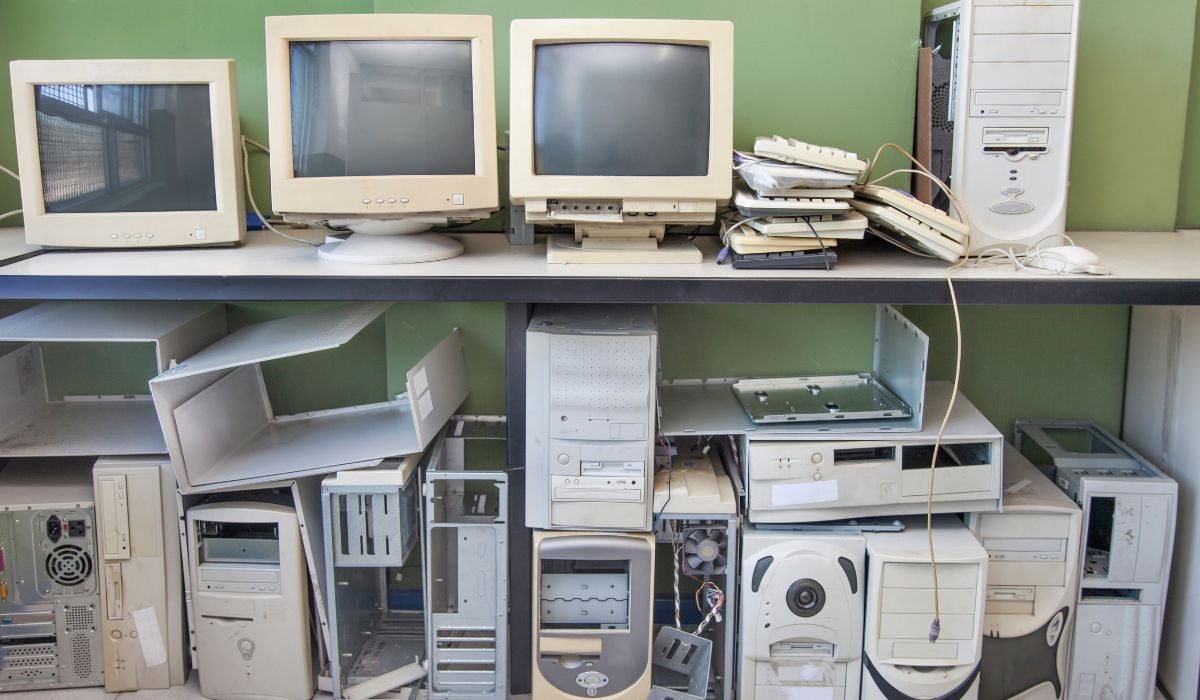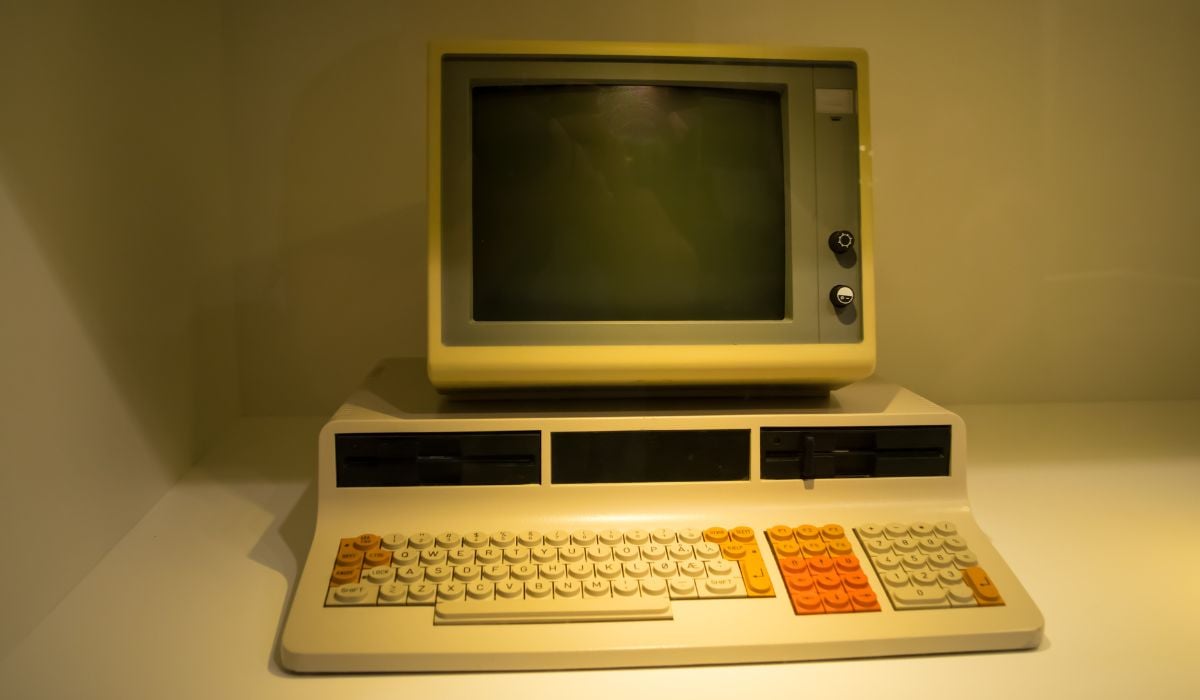In the 1990s, computers became smaller, faster, and cheaper. Which is all positive for the consumers. it is how we went from the large, heavy-duty computer monitors and systems to sleek MacBook Airs and so on.
In some ways this was a "retro" decade. Microprocessor architecture had been invented in the late 1950s and early 1960s, and gradually evolved through the 1970s to become known as the 4-bit microprocessor.
By the end of the 1980s, commercial microprocessors were available which incorporated 8-bit instructions and operated at simple arithmetic speeds of around 10MHz (million operations per second). This was still slow enough for most businesses to outsource software development to specialist computer programmers or "programmers who program."
Computers changed dramatically in the 90s. The mid-1980s saw IBM introduce its first PC with an Intel 8088 processor running at 4MHz. This provided more than enough processing power for word processing software but was not fast enough to run computer games or high-end graphics applications effectively.
However, by introducing a hard disk drive with this system and setting it up inside a desktop computer rather than a large mainframe computer cabinet, IBM changed how we did business forever.
This marked the beginning of what is called "the Information Age." Computers became available via retail sales channels and gradually gained acceptance among small businesses and home users within a few years.
Let's take a look at the history of computers and microprocessors
The Evolution of Microprocessors

In the 1990s, microprocessors advanced significantly and allowed for unprecedented levels of computing power. Various companies such as Intel and AMD made microprocessors that could work at speeds of up to 100MHz, and then 200MHz.
This allowed for much faster processing, as well as the ability to run more complex applications. In the late 1990s, processors hit the gigahertz (GHz) range, giving them the ability to process multiple instructions at the same time, allowing for multitasking.
These advances allowed for the development of ever-faster computers, as well as the ability to run graphical user interfaces, games, and other types of sophisticated software.
Furthermore, because of the increased processing power, computers became cheaper and more accessible. This allowed for the development of the modern internet and the explosion of web-based services.
The evolution of microprocessors in the 1990s was crucial to the development of modern computing and has allowed us to do things that would have been impossible a few decades ago. As more computational power is added to chips, computers will continue to become faster and more capable.
IBM's Introduction of the PC
The introduction of IBM's first PC with an Intel 8088 processor running at 4MHz was a catalyst for the beginning of the Information Age.
This marked a huge shift with computers becoming available via retail sales channels and gaining acceptance among small businesses and home users within a few years.
The PC was smaller, faster and cheaper than previous computers, and provided users with more than enough processing power for word processing software. The inclusion of a hard drive also allowed for businesses to operate more efficiently than ever before.
The introduction of the PC also set the stage for the evolution of computers throughout the 1990s and beyond. Computers became even smaller, faster and cheaper as the decade progressed.
As a result, computer games and high-end graphics applications were able to become more popular, which further changed how we interact with technology and how businesses operate.
The introduction of IBM's PC in the 1980s created a platform for the advancement of computers that would only continue to grow throughout the 1990s and beyond.
Personal Computers: The Game-Changer
In the 1990s, computers changed dramatically as they became smaller, faster and cheaper. This allowed for a shift in the way people used computers, as they could now be used for tasks like word processing, gaming, graphics applications and more.
IBM was at the forefront of this revolution, introducing the first Personal Computer (PC) with an Intel 8088 processor running at 4MHz. This was a major step forward in terms of processing power and it helped to pave the way for the Information Age.
With the advent of the PC and its increasing affordability, people began to use computers for tasks like maintaining budgets, writing documents, and creating artwork.
Computers also enabled businesses to automate their operations and increase their efficiency. The proliferation of the internet in the 1990s further increased the use of computers, as it allowed for people to communicate with others around the world, access information and resources, and purchase goods and services online.
The introduction of the PC in the 1990s truly revolutionized how people interacted with computers, and it marked the beginning of the digital age.
Computers became a common sight in homes and businesses and gradually gained acceptance among people of all ages and backgrounds.
The reliability, portability and affordability of the PC allowed for a dramatic increase in the use and adoption of computers, and this has enabled people to benefit from the immense power of computing.
The Availability of Computers Through Retail Channels

In the 1990s, computers experienced a revolution in terms of size, speed and affordability.
The introduction of the IBM PC with an Intel 8088 processor running at 4MHz marked the beginning of a new era, with the availability of computers through retail channels such as department stores, electronics stores and computer superstores.
This opened up the market to smaller businesses and home users, who could purchase a computer without having to pay thousands of dollars for a large mainframe computer. For the first time, computers were now accessible to a much larger segment of the population.
The availability of computers through retail channels meant that consumers had access to the latest technology, such as CD-ROM drives, high-end graphics cards, sound cards and other peripherals.
This helped to drive the development of new applications, such as computer games and multimedia software, which made the use of computers more accessible and enjoyable for the general public.
The availability of computers at retail channels also enabled the release of powerful software packages, such as Microsoft Office, which provided an all-in-one suite of word processing, spreadsheet, database and other software applications.
In addition to making computers more accessible, the availability of computers through retail channels also helped to drive down prices, making them more affordable for everyone.
This led to the growth of the computer industry, which in turn helped to create jobs and sparked a revolution in the way we use technology today.
Without the availability of computers through retail channels, it is highly unlikely that the computer industry would have seen the same level of success and growth.
The outcome of the Information Age

The mid-1990s saw the emergence of the Pentium processor from Intel. This was a 32-bit processor which operated at speeds of up to 200MHz.
This was enough processing power to run professional desktop applications such as AutoCAD and graphic design software. In addition, the emergence of Windows 95, a graphical user interface operating system from Microsoft, made it easy to use these powerful computers.
This marked the beginning of a new era in computing, as desktop computers and laptops became affordable to most people.
The 1990s also saw the emergence of the internet and the World Wide Web.
This allowed people to access and exchange information on a global scale, connect with different folks, outsource work, and it created a global marketplace and enabled communications around the world. This marked the beginning of e-commerce and digital communications, and the information age was born.
The impact this had on economic growth was unprecedented.
The 1990s saw the emergence of the dot-com companies and the emergence of the digital economy. Companies such as Amazon, eBay, Google, Facebook and Apple all emerged in the 1990s and went on to dominate the digital economy.
This has changed the way people do business, as it has made it easier for companies to reach customers and for customers to find the products and services they need. It also enabled small businesses to compete with larger companies, as the cost of entry is much lower.
The information age has led to the emergence of a global economy, as businesses and individuals can now communicate and interact with each other online.
Rapid growth, socialization, and public investment was imminent.
Computing Power Increases
In the 1990s, computing power saw its largest increases. The introduction of the Intel Pentium processor in 1993 marked a turning point in computer technology, with the chip processing at speeds of up to 90MHz.
This enabled the development of more sophisticated software applications, and the development of games and graphics applications that were far more complex than anything achieved in the preceding decade.
The release of Windows 95 in 1995 further opened up the possibilities of what could be done with computers.
This was the first version of the Windows operating system to be based on the 32-bit architecture, and this allowed it to take advantage of the increased speed of the Pentium processor and the added memory capacity of the hard disk drive.
The emergence of the internet in the late 1990s meant that businesses and individuals could share information, collaborate and communicate in ways that had not been possible before.
This was the start of the modern information age, and the technology of the time provided the foundation for the internet and the global digital economy.
The computing power available to businesses and consumers at the end of the 1990s was significantly greater than at the start of the decade, and this has continued to increase ever since.
High-End Graphics

The 1990s saw a dramatic increase in the power of computer hardware. By the end of the decade, it was possible to buy a budget PC with a Pentium III processor running at speeds of 700MHz.
This was more than 10 times faster than the previous generation of processors and allowed for the development of the first truly high-end graphics cards.
These graphics cards could render 3D images with great realism and allowed for the development of complex games and other graphics-intensive applications.
Over the following decade, graphics cards continued to increase in power, with the latest cards being able to produce lifelike images at resolutions of up to 4K.
The introduction of dedicated graphics processors, such as the NVIDIA GeForce, meant that GPUs were no longer limited in their processing power and could enable increasingly realistic graphics.
This has enabled the development of video games, virtual reality simulations and medical imaging technologies that were previously impossible.
High-end graphics cards have become an important part of the modern computer system and are essential for the latest in gaming and multimedia experiences.
With the widespread availability of these cards, this technology is now accessible to everyone.
Graphics and Games Become Possible
The 1990s saw a dramatic shift in the way computers and computing technology was used. This was due to the dramatic advances in microprocessor technology which saw the speed of processors (in terms of millions of instructions per second) increase exponentially.
This meant that computers could now be used to run applications and games that were impossible to do on the slower processors of the 1980s.
Better graphics and sound cards meant that games, such as Doom and the very popular simulation game, The Sims, now had high-quality graphics that were not possible on the older 8-bit processors.
This meant that games and graphics programs were now accessible to everyone, regardless of if they owned a computer or not.
The improvements in processor speed allowed for the development of new applications, such as spreadsheet programs and database applications.
These programs were designed to make the job of the user easier and more efficient. They allowed the user to manipulate data in ways that were not possible with the traditional programming languages of the 1980s.
This allowed for the development of new business solutions and the emergence of the dot-com boom in the late 1990s. It also allowed for the development of the world wide web, which revolutionized how we interacted with each other and the world around us.
The 1990s saw a revolution in computer technology and how people use them.
The improvements in processor speed meant that computers could now be used to run games and graphics applications that were impossible on older computers.
This opened up a new world of possibilities and enabled people to create and experience entertainment and applications that they had never thought possible. It was the decade that saw the dawn of the information age and the emergence of the dot-com boom.
We've Come a Long Way Since Microsoft Paint

Take a quick look at your (likely) Apple Computer. It's sleek and fast.
Things really have come a long way.
The 1990s saw computers become smaller, faster, and cheaper. This decade marked the beginning of the Information Age, with IBM introducing the first PC with an Intel 8088 processor. From large, outdated computers to video game consoles and MP3 players, it is easy to see the growth of computers.
This changed the way businesses operated, and computers gradually gained acceptance among small businesses and home users.
These advancements in computing power allowed for the growth of the Information Age and the development of user-friendly computer interfaces.
As technology continues to evolve, it is important to remember the incredible impact computers had in the 1990s and how they continue to shape our lives today.
More Articles:
